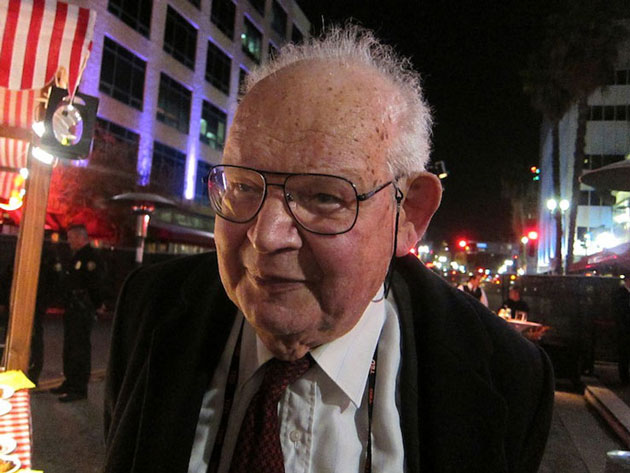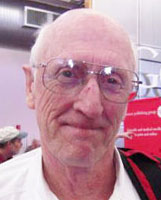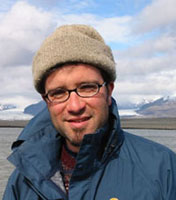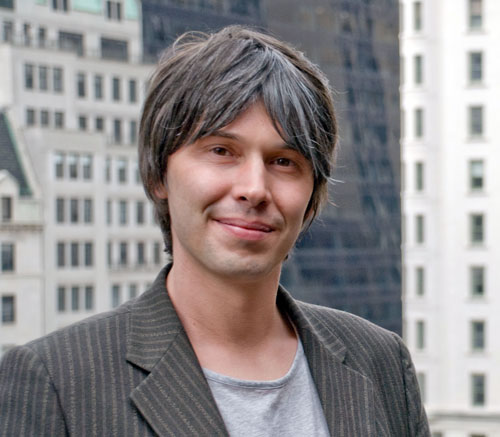To remember and to honor Benoit Mandelbrot, Edge is pleased to present several pieces:
"A Theory of Roughness: A Talk with Benoit Mandelbrot", an Edge feature which previously ran on December 20, 2004
Response to the 2005 Edge Question, "What Do You Believe Is True Even Though You Cannot Prove It?
"A remembrance on behalf of the Edge community by Dimitar Sasselov;
"Benoit's Dangerous Life" by George Dyson
"The Father of Long Tails", a 2008 interview conducted in Paris by the Swiss art curator andEdge collaborator Hans Ulrich Obrist, currently the Curator of the Serpentine Gallery in London.
Response to the Edge-Serpentine Gallery collaboration "Formulae For The 21St Century: What Is Your Formula? Your Equation? Your Algorithm?"
Photograph: Budapest, 2003. "Benoit's Dangerous Life": A report on the photograph by George Dyson
Photograph: With John Brockman, Cambridge, Massachusetts, December 29, 2010
BENOIT MANDELBROT, who died on October 14th, was Sterling Professor of Mathematical Sciences at Yale University and IBM Fellow Emeritus (Physics) at the IBM T.J. Watson Research Center. His books include The Fractal Geometry of Nature; Fractals and Scaling in Finance; and (with Richard L. Hudson) The (mis)Behavior of Markets.
A THEORY OF ROUGHNESS [12.20.04]
A Talk with Benoit Mandelbrot
A recent, important turn in my life occurred when I realized that something that I have long been stating in footnotes should be put on the marquee. I have engaged myself, without realizing it, in undertaking a theory of roughness. Think of color, pitch, loudness, heaviness, and hotness. Each is the topic of a branch of physics. Chemistry is filled with acids, sugars, and alcohols — all are concepts derived from sensory perceptions. Roughness is just as important as all those other raw sensations, but was not studied for its own sake.
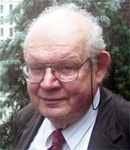
Introduction
By John Brockman
During the 1980s Benoit Mandelbrot accepted my invitation to give a talk before The Reality Club. The evening was the toughest ticket in the 10-year history of live Reality Club events during that decade: it seemed like every artist in New York had heard about it and wanted to attend. It was an exciting, magical evening. I've stayed in touch with Mandelbrot and shared an occasional meal with him every few years, always interested in what he has to say. Recently, we got together prior to his 80th birthday.
Mandelbrot is best known as the founder of fractal geometry which impacts mathematics, diverse sciences, and arts, and is best appreciated as being the first broad attempt to investigate quantitatively the ubiquitous notion of roughness.
And he continues to push the envelope with his theory of roughness. "There is a joke that your hammer will always find nails to hit," he says. "I find that perfectly acceptable. The hammer I crafted is the first effective tool for all kinds of roughness and nobody will deny that there is at least some roughness everywhere."
"My book, The Fractal Geometry of Nature," he says, reproduced Hokusai's print of the Great Wave, the famous picture with Mt. Fuji in the background, and also mentioned other unrecognized examples of fractality in art and engineering. Initially, I viewed them as amusing but not essential. But I soon changed my mind.
"Innumerable readers made me aware of something strange. They made me look around and recognize fractals in the works of artists since time immemorial. I now collect such works. An extraordinary amount of arrogance is present in any claim of having been the first in "inventing" something. It's an arrogance that some enjoy, and others do not. Now I reach beyond arrogance when I proclaim that fractals had been pictured forever but their true role had remained unrecognized and waited for me to be uncovered."??
—JB

